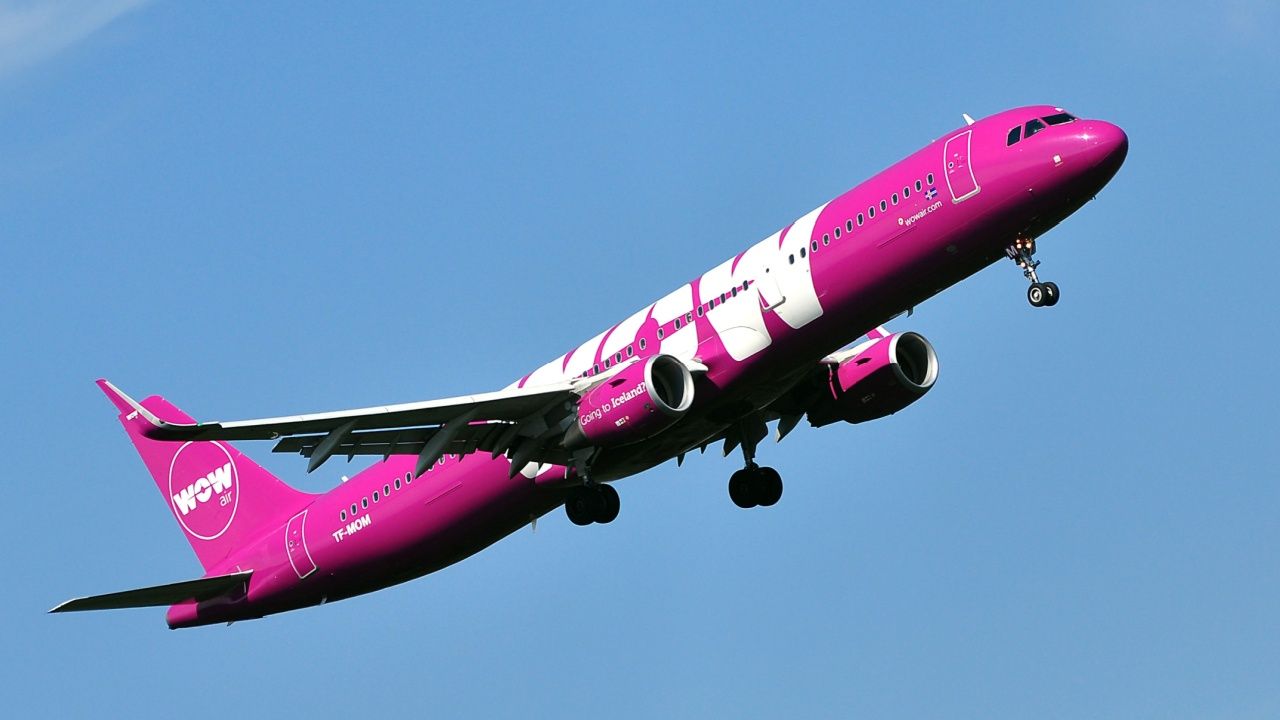Summary
- Fuel costs surged, affecting WOW Air’s low-cost model.
- Fleet diversification complicated WOW Air’s operations.
- Tough competition, especially in transatlantic routes, posed challenges for WOW Air and led to its collapse.
While some airlines (like Delta Air Lines, Qantas, and KLM) have been flying from the earliest days of commercial passenger aviation, others don’t last a decade. The Iceland-based airline WOW Air was an ultra-low-cost Icelandic airline that operated between 2012 and 2019. In 2019, Wow collapsed and joined the ever-growing list of failed airlines. In the end, it was a cheap airline with huge losses.
When WOW went bankrupt, those without proper insurance lost their unused airfare. But what caused WOW’s bankruptcy? As with many complicated topics, there is not a straightforward answer and one cause; a number of factors triggered its demise. Today, Icelandair is the flag carrier of the small Nordic nation.
The big reason
Airlines go bankrupt all the time (especially small ones); according to Alternative Airlines, 9 ceased operations in 2023, and 19 ceased operations in 2022. WOW’s time came in 2019 – a year when around 27 airlines ended (including Thomas Cook Airlines).
Photo: Vytautas Kielaitis l Shutterstock
With WOW, one of the key factors was the surge in the cost of fuel. With its low-cost model, profit margins were already rather thin. Any shift in airline expenses (fuel being one of the largest) would be hard-hitting. In fact, in February 2018, the cost of jet fuel was roughly US$1.85 per gallon. That, itself, is double what it was two years before, a record low of $0.93. By May 2018, the cost was well over $2, with a peak in September at $2.25.
Photo: Airbus
The drastic rise was simply a storm that WOW Air could not weather. The airline did try, and WOW CEO Skúli Mogensen injected an impressive €5.5 million worth of his own money into the airline. While this may have extended the airline’s life a little, it was nowhere near enough to overcome the surge in jet fuel prices.

Related
The Rise And Fall Of WOW Air: Iceland’s Bold Purple Airline
Fleet diversification
Before the swift rise in oil prices, WOW Air had acquired three widebody Airbus A330-300s. Look at any successful low-cost airline today, and you’ll see that they all have one characteristic in common: a single-aircraft-type fleet. easyJet and Wizz Air use the Airbus A320, while Ryanair and Southwest fly the Boeing 737.
Having these A330s may have enabled WOW Air to fly further, but they also made aircraft operations a little more complicated. It wasn’t just that the aircraft were a different type; it was also that they were big expenditures for the airline. These purchases took place shortly before the rise in oil prices.
Photo: Airbus
Transatlantic competition
A huge part of WOW Air’s revenue came from transatlantic passenger traffic, but this market is crowded. Not only do you find foreign legacy carriers serving the market, but there’s also fellow Icelandic airline Icelandair. WOW also faced low-cost competition from Norwegian. This carrier had more fuel-efficient Boeing 787s to cross the ocean, and they could do so without a stop in Iceland.
|
5 notable collapsed airlines |
Year |
Country-based |
|---|---|---|
|
Thomas Cook Airlines: |
2019 |
United Kingdom |
|
Ansett Australia: |
2001 |
Australia |
|
Trans World Airlines |
2001 |
United States |
|
Pan Am: |
1991 |
United States |
|
Continental Airlines: |
2012 (merged into United) |
United States |
The large amount of competition made it a constant uphill battle for WOW. In any case, it would, at times, end up costing the same price as its competitors after ancillary fees were collected for a larger carry-on or checked bag.
Furthermore, when fuel prices rose, WOW Air was stuck between a rock and a hard place. It was a budget airline with basic service at low prices. A rise in fuel costs would compel it to pass the costs to passengers by raising fares.
Photo: Airbus
However, if WOW had done this, it would have risked moving itself out of the budget price range and competing more directly with full-service airlines. As such, its operations became unsustainable, with the aforementioned combination of factors forcing it to stop flying in March 2019. However, since then, Iceland has launched a new low-cost airline despite the challenges of the coronavirus pandemic.

Related
Icelandic Low-Cost Carriers: Why PLAY Could Succeed Where Wow Air Failed
From the ruins of Wow Air comes a young, ambitious successor.
A new budget option
The carrier in question is PLAY Airlines, which commenced operations in June 2021. The airline initially only served European destinations, but has since followed WOW’s strategy by offering connecting transatlantic itineraries. Today, data from ch-aviation.com shows that the red-liveried carrier has three Airbus A320neos and three A321neos in its fleet, with average ages of 2.5 and 46 years old, respectively.
|
PLAY Airlines profile |
|
|---|---|
|
Founded: |
2019 (commenced operations 2021) |
|
Type: |
Low-cost airline |
|
Destinations: |
Approx. 43 |
|
Fleet: |
Airbus A320neo, Airbus A321neo |
|
Hub: |
Keflavík International Airport |
Its network consists of 26 destinations across 15 countries. In its first year or so of operations, PLAY has managed to sustain continuous growth, with its latest results showing that it carried 92,181 passengers in September 2022, with an average load factor of 81.5%. It will certainly be interesting to see how this interesting new carrier is able to sustain its growth and performance going forward.
Did you get a chance to fly with WOW Air while it was still operating? What did you make of its eventual collapse? Let us know your thoughts and experiences in the comments.



.jpg)

.jpg)